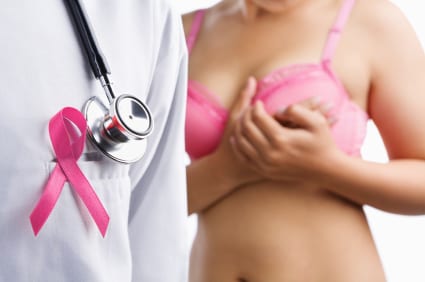When it comes to breast cancer, early detection is the best protection. When treatment begins before breast cancer has spread beyond its initial site, the five-year survival rate is almost 100 percent, according to the American Cancer Society. If the cancer has spread to nearby lymph nodes, the five-year survival rate is still higher than 80 percent. In marked contrast, if breast cancer is not found until it has spread to other organs, the five-year survival rate falls to 20 percent.
Breast Self-Exams
Breast self-exams (BSE) are an opportunity to regularly check for signs of cancer. Symptoms can include lumps, swelling, redness, tenderness or other changes to the breast tissue. While BSE can be effective, many woman discover lumps or blemishes that may be signs of cancer by casually checking their breasts while dressing or showering, according to the American Cancer Society. Report any changes in your breasts to your doctor as soon as possible.
Clinical Breast Exams
The American Cancer Society recommends a regular clinical breast exam for all women age 20 and older. Women in their 20s and 30s should have the exam at least once every three years, and more often if they have had a pregnancy. Women age 40 and older should have an annual clinical breast exam in addition to a mammogram. The clinical breast exam serves to detect cancer and allows you to ask questions about any changes to your breasts or about your breast cancer risks.
Diagnostic Exams
Mammography and Magnetic Resonance Imaging (MRI) are key diagnostic tools in the battle against breast cancer. The American Cancer Society and National Cancer Institute, among other organizations, recommend women age 40 and older have annual mammograms. There is evidence that mammography is more effective at detecting breast cancer after age 50. Because of this, the American College of Physicians and other groups suggest discussing the right timing for your mammography screenings with your physician.
High Risk
If you are at high or moderate risk for breast cancer, discuss with your physician the benefits of earlier mammograms and MRI screenings. She may recommend a baseline mammogram during your early 20s to compare with later screenings, making changes in the breast easier to detect. You are at higher risk if you have a family history of breast cancer, have had radiation treatment in the past, were pregnant in your 30s, or have the genetic breast cancer marker.





